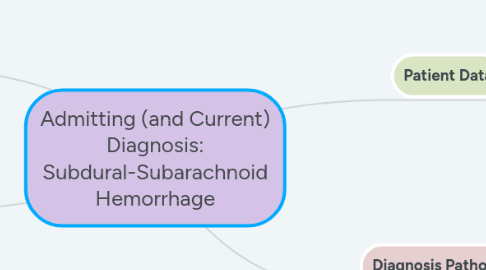Admitting (and Current) Diagnosis: Subdural-Subarachnoid Hemorrhage
by Karissa Miller


1. Diagnostic Testing
2. Medications
3. Patient Data
3.1. Upon a full Head-to-Toe Assessment, patient is awake and alert and oriented x4, yet confused and presents with short term memory loss as patient repeats same questions frequently and reacts impulsively at times. Equal bilateral weakness of +2 in hand grips and foot pushes. Otherwise neurologically intact. Cardiovascular assessment presents normal sinus rhythm with S1 and S2 heart sounds auscultated. Lungs clear to auscultation in upper and lower lobes bilaterally. Equal bilateral expansion. No noted GI abnormalities upon assessment. Patient on cardiac diet. Patient is continent and voiding adequate amounts of clear, amber urine without difficulty. Mobility is passive due to weakness and fatigue, but CMST is intact. Skin is intact, dry and pink with the exception of IV site punctures wounds in the right hand and left AC. Patient is on a fall risk precaution. Patient is cooperative but withdrawn.
3.1.1. Vital Signs: oral temperature 98.2 degrees Fahrenheit, pulse 77 beats per minute with normal sinus rhythm noted, respirations 18 breaths per minute and unlabored, blood pressure 139/55 mmHg via left upper arm, oxygen saturation 97% on room air. Patient denies pain.
